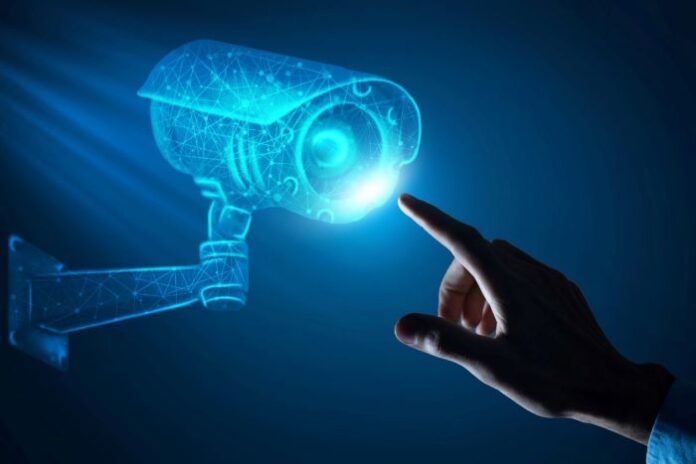As digitalization continues to take hold of the world and population centers become more dense, the amount of data generated on a daily basis will grow to staggering amounts. One significant source of data in today’s society is images, including video surveillance recordings from security cameras. These devices help to deter unwanted or inappropriate action, to monitor the patterns and behavior of individuals, and to provide valuable evidence for legal proceedings. The future of security will be determined by enhanced AI monitoring.
However, when a camera system malfunctions or fails to properly monitor its intended focus, the ramifications can put people and property at risk. To deter these threats, organizations utilizing these systems now require internal policies, which include video clarity assurance and records retention, making the ever-increasing amount of data produced by security camera systems challenging to manage. This is where AI software can prove to be extremely advantageous.
AI for security cameras: Current capabilities
AI software and pattern recognition have played a significant role in business applications such as fraud detection, high-frequency trading, and user recommendations on social media. This technology’s métier is its ability to detect patterns among vast amounts of data, leading to more efficient, timely, and effective solutions. Similarly, AI can be used for pattern recognition to monitor the functionality of camera systems, and the future of security.
An AI program monitoring security cameras is paving the way for enhancing the efficiency and the future of security for people and organizations. For instance, a military installation or a large corporate office typically has a system comprised of hundreds or thousands of cameras that must be maintained at a given time. Monitoring the maintenance of such a system is an almost impossible task for humans to perform manually. However, AI monitoring the status and operation of security cameras streamlines the inspection process for camera issues by automatically catching camera view failure due to blur, block, tilt, glare, or low-light or other camera view problems. The AI technology promptly alerts users about any problems with the security camera evidence they expect to have.
For indoor cameras, AI software can signal when issues occur, including problems relating to infrared functionality used to capture night-time video footage. Even small specks of dust, scratches on the lens, or spider webs can cause the infrared light to diffuse and produce a blurry image. While video recording technology for surveillance cameras is improving vastly, it is the role of AI to ensure that the quality of the images and videos captured have the clarity and usefulness expected by users.
The limitations of security camera software
While security camera software with AI can reduce worker hours and increase efficiency, there are currently some limitations. AI makes predictions based on pattern recognition, but it only recognizes very specific patterns encoded into it. For example, it can identify cars in video surveillance imagery, but it can’t necessarily recognize other objects or phenomena. To create the most effective programs and for AI to reach its full potential, tech developers and business leaders need to collaborate. Finding the right blueprint or model for information input will achieve the highest standards of performance as there is no one-size-fits-all solution. Although, this will be the future of security.
Another limitation to consider is that while AI can automate many tasks, many tasks that require decision making (e.g., whether to call for first aid instead of calling the authorities) will still require human intervention. Over time, AI may be able to automate more workflows rather than just identifying specific objects or scenarios, but it is a more complicated process and impossible to know exactly when that will occur.
The road ahead: Enhancing security surveillance with AI
While not every security solution contains or benefits from AI, those that do provide a tremendous ROI for the security team. Consider concept recognition and the understanding if movement in a public area is benign or potentially harmful. Each task in a security situation can be broken into a concept and a situation so the framework of people in a certain situation could be classified and tagged for the security team as it happens. While AI is currently really good at concept recognition, it’s not very good at making decisions based on recognition. For example, AI wouldn’t know if it saw someone behind a dumpster whether to call the police or the ambulance as in this situation, the individual could be passing out because they are sick—or someone trying to break into a facility.
But soon, business leaders can expect that we will reach a point where users can decide how much context is needed to make an accurate determination of the situation. Is it reasonable to expect someone behind a dumpster (concept) at 10 a.m. to be ill or committing a crime (situation)? By developing a system that is sensitive to all conditions, AI will truly be able to better increase the speed at which potential and actual crime is identified or deterred.
The Future of Security
As business leaders and AI specialists come to realize the best uses for AI software, the more effectively these solutions will be trained and deployed. There must be a symbiotic relationship between AI developers and security professionals so the capabilities of AI can provide further value to the future of security and the industry. The rewards will be well worth the wait; businesses will waste less time on tasks that AI can solve quickly, and AI developers will deliver the most efficient devices to the market.
















